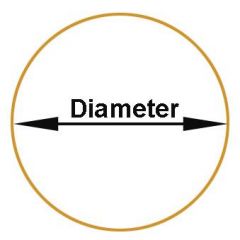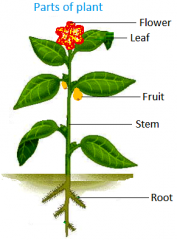![]()
![]()
![]()
Use LEFT and RIGHT arrow keys to navigate between flashcards;
Use UP and DOWN arrow keys to flip the card;
H to show hint;
A reads text to speech;
28 Cards in this Set
- Front
- Back
|
Increase |
to become bigger or make bigger the amount or size of something |
|
|
Decrease |
to become smaller or make smaller the amount or size of something |
|
|
Reduce |
to become smaller or make smaller the amount or size of something |
|
|
State of Matter |
form something can take 3 common states of matter: solid, liquid, gas |
|
|
Property |
characteristics of something, such as texture, shape, color, odor, size, etc. |
|
|
Density |
how much stuff there is in something (how thick it is) ex. ping pong ball and golf ball are same size and have same volume but golf ball is denser |
|
|
Energy |
ability to do work |
|
|
Main Source of Energy |
sun |
|
|
Chemical Energy |
found in food and batteries |
|
|
Mechanical Energy |
examples are chewing and moving |
|
|
Light and Heat Energy |
examples are sun and light bulbs
|
|
|
Sound Energy |
produced when you speak or play and instrument |
|
|
Organism |
any living thing all organisms 1. grow, 2. reproduce (have babies) and 3. die |
|
|
Length |
definition: how long something is tools: ruler, tape measure units of measurement: centimeters (cm) or inches (in) |
|
|
Width |
definition: how wide something is tools: ruler, tape measure units of measurement: centimeters (cm) or inches (in) |
|
|
Diameter |

definition: width of a circle tools: ruler units of measurement: centimeters (cm) or inches (in) |
|
|
Mass |
definition: weight of something tools: scale, balance units of measurement: grams (g) |
|
|
Volume |
definition: how much space something takes up tools: graduated cylinder, beaker, measuring cup units of measurement: milliliter (ml) or liter (L) |
|
|
Temperature |
definition: how hot or cold something is tools: thermometer units of measurement: degrees Celsius (C) or degrees Fahrenheit (F) fact: water freezes as 0 degrees Celsius and boils at 100 degrees Celsius |
|
|
How can seeds be dispersed (spread)? |
1. wind 2. animals (on animal fur, digested or buried) 3. water (float) 4. falling on ground |
|
|
Parts of green plant |

|
|
|
What to roots do? |
1. take in water from the soil 2. take in minerals from the soil 3. store excess food 4. transport water and food to other parts of the plant 5. hold or anchor the plant in the soil |
|
|
What does a stem do? |
1. support the plant
2. expose the leave to sunlight 3. transport food and water to other parts of the plant |
|
|
What do leaves do? |
1. take in carbon dioxide from air and release oxygen back into the air (respiration) 2. take in energy from the sun |
|
|
What does a flower do?
|
|
|
|
Inherited trait |
something organism gets genetically from its parents most physical characteristics are inherited from parents example is kitten will resemble its parents in that it will have four legs, two ears and eyes, a tail, and fur. The color of its fur and its overall shape will resemble its parents. It will breathe air and need water and food just like its parents. |
|
|
Learned trait |
something organism must be taught examples are language, good behavior, how to ride a bike |
|
|
Acquired trait |
something that changes an organism after birth (not from parents) and not learned examples are changes from disease, injury or accident, such as scars |

